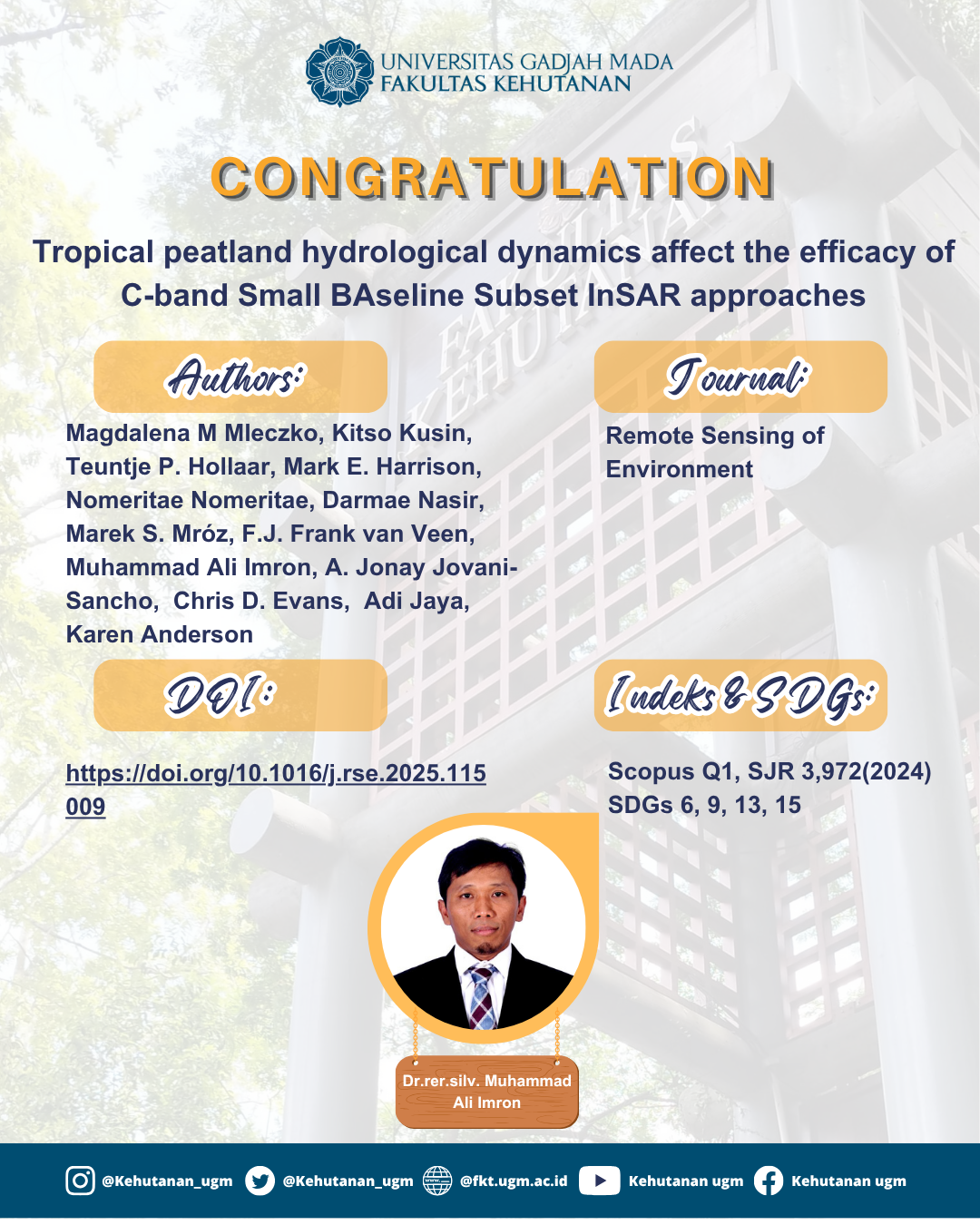
Abstract
Tropical peatlands storing ∼18–25 % of global peat volume contribute significantly to the global carbon cycle. To balance preservation and protection of tropical peatlands requires assessment of their ecohydrological conditions and continuous monitoring through seasons. This is challenging to achieve using in situ sampling, but there is a great promise to use C-band Sentinel-1 data for this due to its weather-independence, and particularly its increased acquisition capacity and spatial/temporal resolution compared to L- and P-band current sensors. Acknowledging that Small BAseline Subset (SBAS) Interferometry using C-Band Sentinel-1 data has been shown previously to be useful for retrieving peatland surface displacement, but also that the amplitude and phase of the SAR signal are dependent on surface hydrology; there remains a critical question about the extent to which the efficacy of SBAS approaches is themselves sensitive to surface hydrological conditions. This is a particular methodological concern in tropical peatlands due to the dynamically changing hydrological conditions arising from significant rainfall events, which can cause groundwater level (GWL) to vary from 1 m to −2 m. The research area was situated in lowland Central Kalimantan (Indonesia) using Synthetic Aperture Radar (SAR) observations from the 2017–2022 period. We used SBAS-derived ground displacements and compared to groundwater level (GWL) and peat surface elevation acquired from local networks of monitoring sites. Our work shows that the prevailing hydrological condition affects the area efficacy of the SBAS approach using C-band SAR data. When surface water significantly floods above the ground surface during the wet season, the coherence is not sustained for a long time. This is the opposite of the dry season, when coherence is preserved in longer intervals between acquisitions. Additionally, the range of correlation values between SBAS-derived displacements and in-situ peat surface and ground water table measurements is higher for the dry season than for the wet and whole hydrological year. We show that the SBAS approach can retrieve surface displacement for 34.4 % to 59.8 % on the peat soils of the tested area (391 to 826 km2), excluding areas of dense forests and open water, due to C-band SAR limitations, i.e. volume scattering mechanism and/or loss of signal coherence on water bodies. We show that appropriate hydrological conditions must be met to determine the change in water level above the ground surface. Too large fluctuations in water level may not be detected because of wavelength limitations, and outliers from the assumed linear model may be filtered out or removed due to the specific properties of this approach. These findings underpin the application of Sentinel-1C-band SAR for monitoring tropical peatlands’ ecohydrological conditions.
SDGs:
SDG 6 :Clean Water and Sanitation
SDG 9 :Industry, Innovation and Infrastructure
SDG 13:Climate Action
SDG 15:Life on Land
